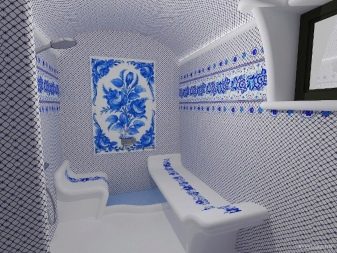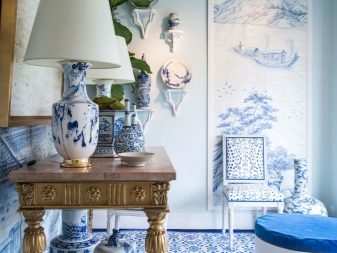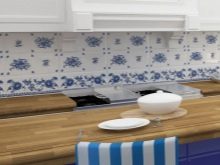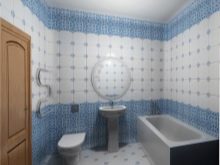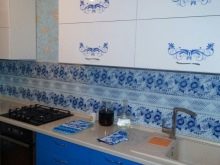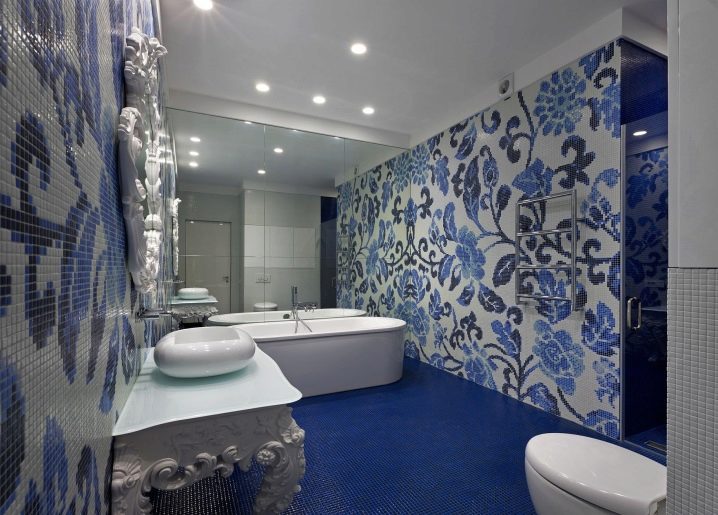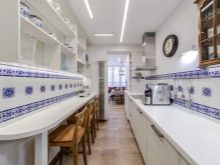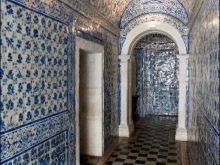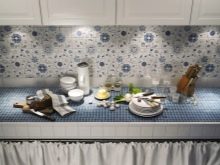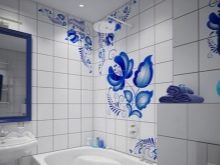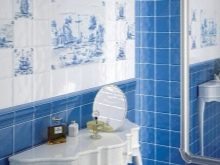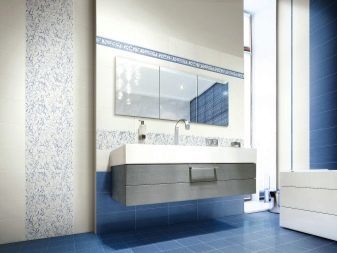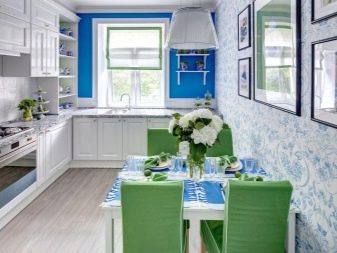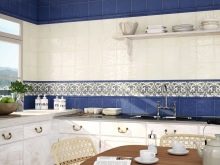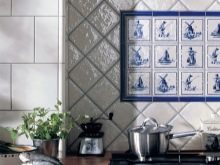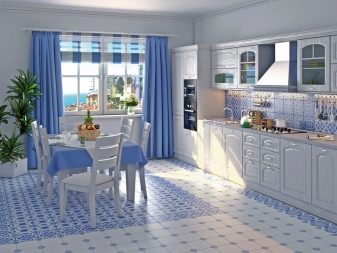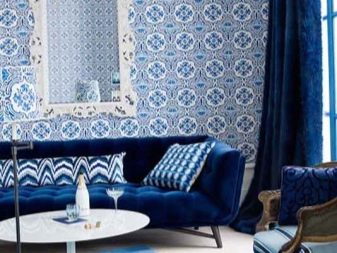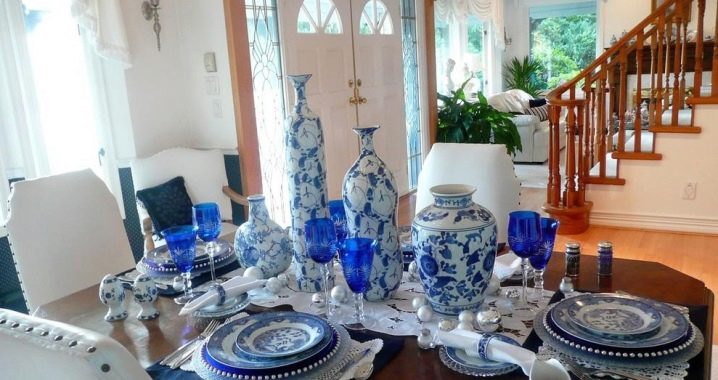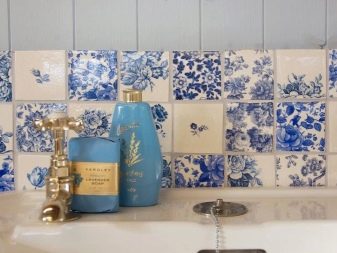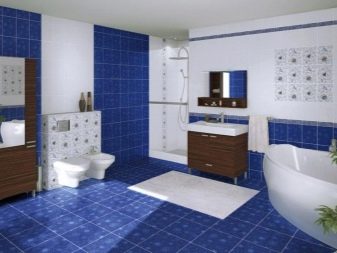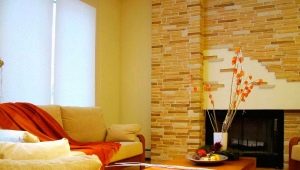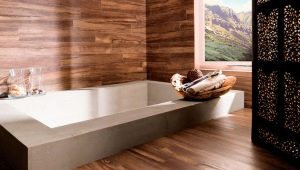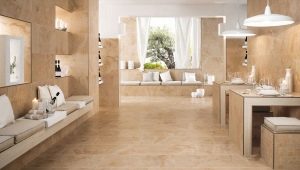Tile "Gzhel" in interior design
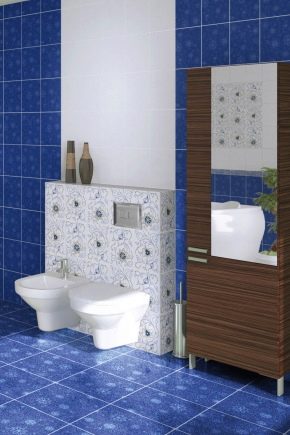
Tile "Gzhel" - a combination of blue and white, floral ornament, always associated with naturalness, purity and serenity. Sometimes herbal and flower motifs can be interspersed with the image of animals, fairy-tale characters, scenes from rural life.
Today, the interior with elements of Gzhel luxury is an exclusivity and a demonstration of its own sophistication and good taste.
One of the easiest ways to add authenticity to a room is to use ceramic tiles in a distinctive blue-and-white style.
Special features
Today Gzhel is known not only in Russia, but also abroad. This folk craft takes its origins in the village of Gzhel of the Moscow District, famous for its deposits of original colored clay.
At first artisans made pottery, painting it with blue-white patterns. Then the products became more elegant, began to glaze and gained popularity.
Modern ceramics in the Gzhel style is distinguished by durability and increased resistance to abrasion, which is achieved by high-temperature roasting of tiles. The elements of painting and composition for glazing in the process of firing are fastened together, forming a single thinnest layer. This saves drawing from abrasion and burnout.
Low porosity and water absorption of the material within 10-15% allows you to use it for finishing the bathroom and kitchen, without fear for the quality and durability of the decorated surfaces. Thanks to the glazed coating, the tile is easy to clean, but you should choose a class A or B material. Such options are resistant to aggressive media, and can often be washed using cleaning products.
Tips from the designer
When choosing tiles in the Gzhel technique, it should be remembered that they are quite active "actors" in the interior, so you need to use them in limited quantities, carefully choosing companions.
Remember that Gzhel does not tolerate a variety of accessories, unnatural. As for furniture, you should choose products of simple geometric forms of natural color.. Below are the recommendations of designers who will help organically fit the tile in the interior.
Styles
Ceramic tile Gzhel harmoniously looks in the interiors of classical and modern styles. Stylish and original tiles are arranged in village styles (country, rustic, Russian style), as well as in the Scandinavian and stylized dacha interiors.
The Gzhel motifs look best on well-lit surfaces. However, even if this recommendation is followed, an excess of blue can make the room cool and uncomfortable. In dark rooms, blue should be dosed out.
- The best option is to choose tiles where there is more blue and white. A good option would be a combination of Gzhel with other natural warm colors: green (grassy, olive), all variations of brown, coral, warm yellow. With proper combination of tiles with gold and a small amount of black, stylish solutions are obtained.
- Win-win - light walls of the room with the design of one of them in the style of Gzhel combined with white furniture and white and blue textiles.
- If you have a delicate taste, then combine the tiles with a deep blue, adding accents and décor in the Gzhel theme.
The coldness of the blue in the material perfectly "balances" the natural wood. As a rule, it is a floor, tabletop or kitchen set. Unusual, but at the same time very calm decisions can be achieved by adding golden or bronze details to Gzhel. They should be a bit, for example, furniture fittings, a chandelier, decor elements, a mixer.
The Chinese and Delft porcelain in blue-white tones, due to its style, is close to Gzhel, therefore it is optimally combined with it. It is noteworthy that “porcelain” can be not only dishes. For example, the kitchen sofa looks stylish, the upholstery of which demonstrates Dutch landscapes and so reminds Delftware porcelain.
We must not forget that the Gzhel is a self-sufficient element of the interior, and the inept use of it can overload the room. When using tiles in the traditional blue-white gzhel range, it should not exceed 80% of the total area of the room.I. That is, if some part of the kitchen (usually an apron area) is decorated with Gzhel tiles, then the rest of the surfaces should be bright monotone shades of a calm texture.Please note that the kitchen unit may have a white or blue tint.
At the same time, the tiles should be “supported” with other accessories in the same style. However, Gzhel should not be furniture or textiles, but for example, dishes, small accessories.
Ornament
Tile with a large ornament looks good in a large area. For more modest in size rooms it is better to choose a tile with a small pattern. A great option is to decorate one of the walls with tiles, paint the rest of the walls in beige or another pastel color..
To avoid boredom and monotony, a combination of Gzhel tiles with other drawings will help. - small peas, cage, stripes. Well, if the pictures will be present on the upholstery of furniture, textiles, accessories, dishes.
An overview of the Gzhel tile is presented in the video below.
